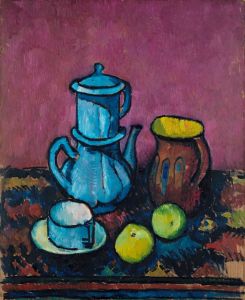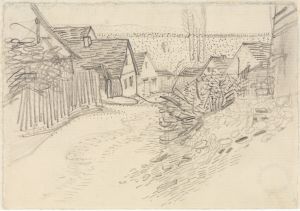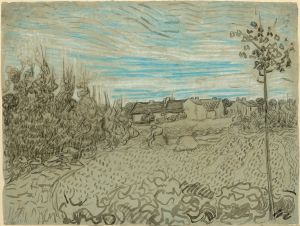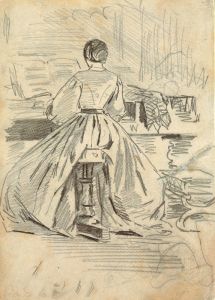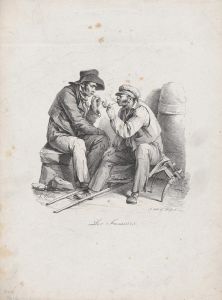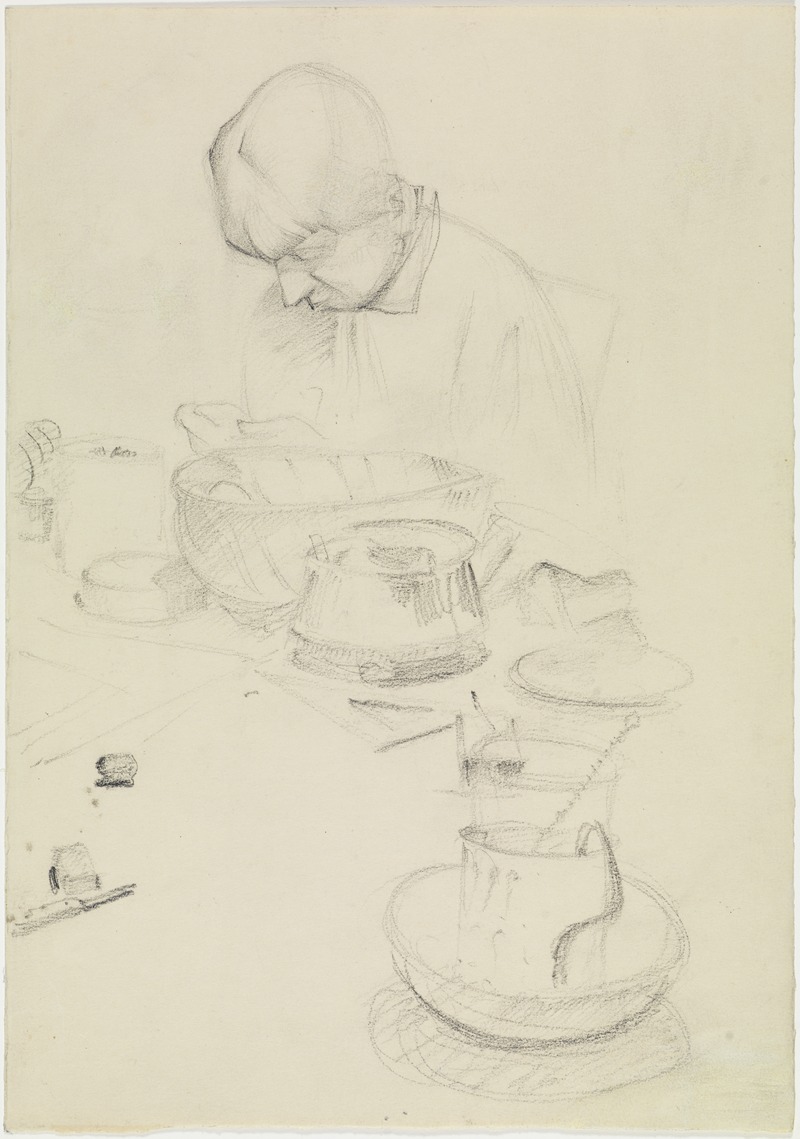
Frau am Tisch
A hand-painted replica of Alexander Kanoldt’s masterpiece Frau am Tisch, meticulously crafted by professional artists to capture the true essence of the original. Each piece is created with museum-quality canvas and rare mineral pigments, carefully painted by experienced artists with delicate brushstrokes and rich, layered colors to perfectly recreate the texture of the original artwork. Unlike machine-printed reproductions, this hand-painted version brings the painting to life, infused with the artist’s emotions and skill in every stroke. Whether for personal collection or home decoration, it instantly elevates the artistic atmosphere of any space.
Alexander Kanoldt's painting Frau am Tisch (translated as "Woman at the Table") is a notable work of art created by the German painter, who was a prominent figure in the New Objectivity (Neue Sachlichkeit) movement. Kanoldt, born in 1881 in Karlsruhe, Germany, was known for his precise and realistic style, which often emphasized clarity, structure, and a sense of detachment. His works frequently depicted still lifes, interiors, and portraits, reflecting the movement's focus on realism and a rejection of the emotional and expressive tendencies of earlier artistic styles like Expressionism.
Frau am Tisch exemplifies Kanoldt's meticulous approach to composition and detail. The painting portrays a woman seated at a table, rendered with a calm and restrained demeanor. The subject's pose and the surrounding environment are characterized by a sense of order and simplicity, hallmarks of the New Objectivity style. The muted color palette and the careful arrangement of elements within the scene contribute to the work's introspective and contemplative atmosphere.
Kanoldt's art, including Frau am Tisch, often reflects the cultural and social climate of post-World War I Germany. The New Objectivity movement emerged during the 1920s as a reaction to the chaos and upheaval of the war, seeking to depict reality with clarity and precision. Artists associated with the movement, including Kanoldt, aimed to present a sober and unembellished view of the world, often focusing on everyday subjects and scenes.
While specific details about the creation and exhibition history of Frau am Tisch are limited, the painting is representative of Kanoldt's broader body of work and his contributions to the New Objectivity movement. His art was later condemned by the Nazi regime as "degenerate," and many of his works were removed from public collections during this period. Despite this, Kanoldt's legacy endures as an important figure in early 20th-century German art.
Frau am Tisch continues to be appreciated for its technical precision and its ability to capture the quiet, introspective mood characteristic of Kanoldt's style. The painting serves as a testament to the artist's skill and his role in shaping the New Objectivity movement.







